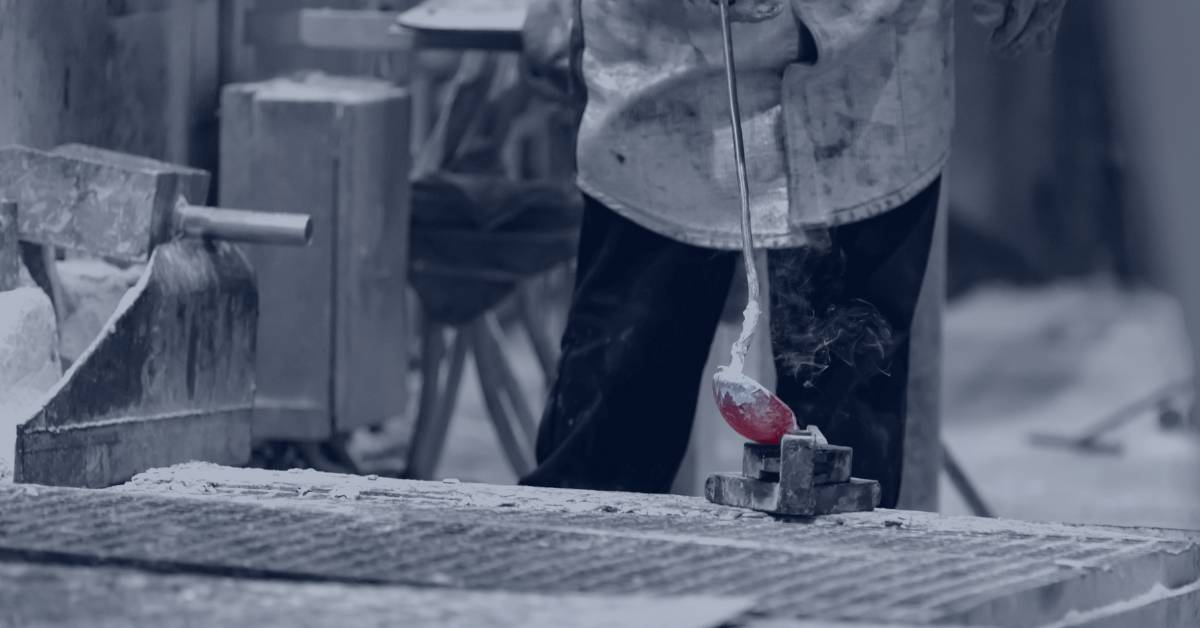The Aluminum Castings Company Statements
The 6-Second Trick For Aluminum Castings Company
Table of ContentsAluminum Castings Company Can Be Fun For EveryoneThe Only Guide for Aluminum Castings CompanyThe Facts About Aluminum Castings Company RevealedThe Facts About Aluminum Castings Company RevealedThe Only Guide for Aluminum Castings CompanyOur Aluminum Castings Company StatementsThe Basic Principles Of Aluminum Castings Company Some Of Aluminum Castings Company
There are 2 primary kinds of die casting made use of in the aluminum casting sector: warm chamber die casting and chilly chamber pass away spreading. The key difference between these methods is just how the molten metal is supplied to the mold and mildew. In hot chamber die spreading, generally made use of for lower melting factor metals, the melting pot is directly attached to the machine, and a bettor forces the material with a gooseneck right into the die dental caries.Not known Details About Aluminum Castings Company
In these techniques, the mold and mildew is purposefully destroyed or damaged away in order to draw out the finished light weight aluminum casting. Common procedures under the group of expendable mold casting include (investment casting),,, and financial investment casting. When manufacturing custom-made aluminum components utilizing expendable molds, suppliers pour liquified aluminum or light weight aluminum alloys into the mold and mildew, which is after that broken apart to release the strengthened metal part.
The is one of the earliest and most utilized types of aluminum spreading. It includes compacting specialty shop sand, frequently reinforced with clay or resin, around a specifically crafted reusable pattern that establishes the shape and internal information of the ended up aluminum product. The pattern system incorporates risers and vents to handle the flow of molten metal and to avoid casting issues such as shrinkage porosity.
Aluminum Castings Company for Beginners

This mold and mildew is then preheated prior to the pouring of molten aluminum or aluminum alloy. As the metal fills the shell, it captures the detailed details and fine surface coating of the mold. As soon as cooled, the ceramic is mechanically or chemically damaged away, permitting the removal and separation of individual cast components.
See This Report on Aluminum Castings Company
Permanent mold and mildew spreading makes use of multiple-use metal mold and mildews and is ideal for automation with regular top quality and much less waste. Expendable mold spreading uses single-use mold and mildews, like sand or foam, offering design versatility and reduced tooling expenses for prototypes or brief runs. Die spreading is best for producing high quantities of light weight aluminum parts that need limited tolerances, fine information, and smooth surfaces.
The Toshiba Device DC-J Series consists of pass away casting devices appropriate for aluminum. Understood for their durable building and high injection efficiency, these equipments make sure efficient and accurate spreading (Aluminum Castings Company).

While light weight aluminum can be utilized in its pure type, it is typically alloyed with various other metals to improve its properties or the residential properties of the other metals. Aluminum alloys are categorized into eight series, phoned number from one to 8.
Facts About Aluminum Castings Company Revealed
This alloying boosts the strength and solidity of light weight aluminum but reduces its ductility and corrosion resistance. The 2000 collection alloys are testing to weld yet can be heat dealt with to improve their residential or commercial properties. The 3000 series alloys are mostly alloyed this link with manganese. This mix boosts corrosion resistance while giving modest stamina.
The 4000 collection alloys are alloyed with silicon, which lowers the melting factor and enhances fluidness. This makes it a popular selection for casting, as it is easy to develop in its liquified state.
Not known Factual Statements About Aluminum Castings Company
This collection is categorized as a high-strength alloy, especially fit for sheet and plate applications because of its outstanding weldability. Its resistance to rust from acids and antacid makes it excellent for usage in rough and hostile atmospheres (Metal Castings). The 6000 series alloys are alloyed with both magnesium and silicon, giving an equilibrium of strength, mechanical homes, and rust resistance
Handling the 6000 collection needs specialized and sophisticated tools, which can be complicated and pricey. Nevertheless, this series is known for its outstanding deterioration and oxidation resistance, along with its convenience of finishing, treatment, and workability. The 7000 series light weight aluminum alloys are the best and most sturdy amongst light weight aluminum kinds, with toughness equivalent to around two-thirds of industrial-grade A3 steel.
The 5-Second Trick For Aluminum Castings Company
Zinc is the primary alloying component in the 7000 collection, improving the hardness of the light weight aluminum, even though zinc's solidity is comparable to that of light weight aluminum on the Mohs range. The 8000 collection aluminum alloys are primarily alloyed with tin, along with little amounts of copper and nickel (Sand Molding). While these alloys use lower toughness contrasted to various other collection, they master machinability and put on resistance
Aluminum cast heatsinks are electrically conductive, permitting them to be grounded effectively. They are usually cast with integrated attributes that minimize the requirement for secondary operations, such as extra machining or setting up, resulting in more expense financial savings. Light weight aluminum spreading is frequently used to manufacture brackets for both sturdy commercial devices and home appliances.
The 5-Minute Rule for Aluminum Castings Company
The single-piece building of light weight aluminum braces boosts their stamina and sturdiness, minimizing the probability of failure. If openings are called for, they can be consisted of directly in the casting mold, minimizing the demand for post-production completing (https://www.openlearning.com/u/alumnmcstngs-t5hdoi/). Suppliers have significantly adopted light weight aluminum spreading for golf devices as a result of its durability, stability, and flexibility in shaping